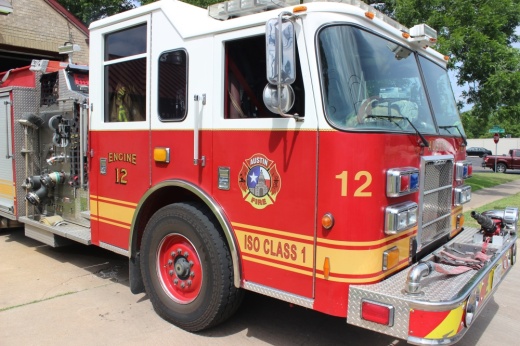Second only to California, Central Texas is one of the highest-risk regions for wildfires, according to the city of Austin.
Current situation
Texas’ fire season occurs every summer, according to Erin O’Connor, the lead public information officer for the Texas A&M Forest Service.
“What is unique about this year is the consecutive number of triple-digit temperature days,” O’Connor said. “When we have days like that, we see more of that extreme fire behavior: very active, very intense fires.”
The extreme heat combined with windy days and little-to-no rain creates “the perfect environment for a wildfire to grow and become established and potentially threaten communities,” O’Connor said.
Fires that start under these conditions often spread quickly and are difficult to control.
On Aug. 11, 181 of Texas’ 254 counties—including Travis, Williamson, Hays, Comal and Guadalupe—were under burn bans.
What you need to know
Local emergency management agencies issue evacuation orders when a wildfire is threatening a community. Evacuations may be voluntary or mandatory and can impact a few homes to an entire town, depending on the location and size of the fire.
Residents were evacuated due to the Oak Grove Fire in San Marcos, the Oak Hill Fire in Kyle, the Parmer Lane Fire in Cedar Park and the Pflugerville brush fire.
During an evacuation, the highest priority is saving lives, according to Justice Jones, the Austin Fire Department’s wildfire mitigation officer.
“We're going to keep an area cordoned off and occluded until we have 100% certainty that it's a safe environment,” Jones said. “So that means that any downed power lines or utilities have been restored, any structures that are damaged have been stabilized, and we know that the fire isn't going to rekindle and cause a second evacuation.”
At least 90% of wildfires are preventable and caused by people, according to the TFS. Fires commonly start when people park on dry grass; drag chains while towing trailers or equipment; or are careless during outdoor activities like grilling or moving.
“Right now, any spark could be catastrophic,” Jones said. “And nobody really wants to be the cause of a catastrophe.”
Williamson County residents are required to have equipment on hand to put out a fire—such as a bucket of water or a fire extinguisher—if they are doing activities that may cause a spark, such as construction, according to Michael Shoe, the director of Williamson County’s Office of Emergency Management.
Planning ahead
All Texans should assemble an evacuation kit that can be taken in the event of an emergency, officials said.
When preparing a kit, residents can start with the “5 P’s”:
- People and pets: Plan to evacuate and transport all family members, pets and livestock. Bring important identification for all people.
- Prescriptions: Gather necessary medications, eyeglasses or contacts, hearing aids and medical equipment.
- Papers: Have physical or electronic copies of insurance information, phone numbers and other important documents.
- Personal needs: Pack enough clothes, food and water for at least 72 hours. If possible, bring batteries, flashlights, phone chargers, first aid kits and hygiene supplies.
- Priceless items: Most memorabilia should be left at home, but officials recommend grabbing irreplaceable photos or other valuables when possible.
During a wildfire, homes are typically lost due to embers, which are “little pieces of flammable material that travel or are lofted up by winds and move ahead of the fire,” O’Connor said.
It is important to clean gutters periodically, she said. When embers land in gutters that are full or vegetation or debris, they can quickly ignite and burn down homes.
Flammable materials, such as plants or flowers, should be placed at least 5 feet away from a home, O’Connor said.
“If you do have trees, we recommend trimming them up so that the branches are not dragging on the ground or hanging over your roof,” she said. “If a fire gets into the canopy of trees, then that can impact your home.”
How homes are built is also important, Jones said, as wooden decks and fences can act as “fuses” during a wildfire.
“Fences burn down more houses than anything else, so if you can break the continuity of how your fence connects to your house, that's a big, big deal,” he said. “It increases the chances that your home will still be there when you return.”
More details
To sign up for emergency alerts about wildfires and other weather events, visit www.warncentraltexas.org. Austin residents can also visit the city’s wildfire hub for more evacuation tips and to learn about the risk of fire in their area.
More details about local burn bans are available on individual county websites.





